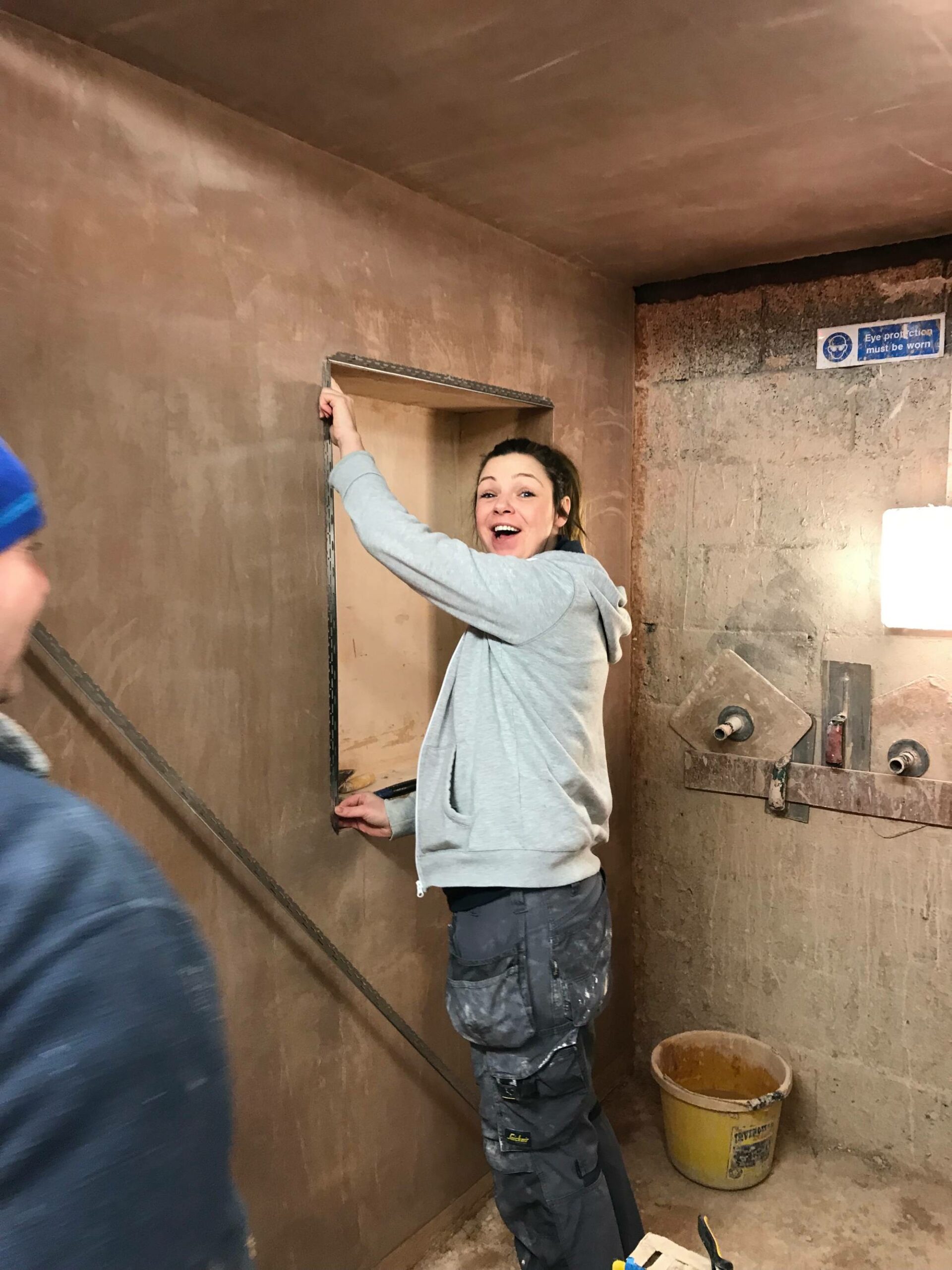Decorative Plastering: Include Special Touches to Your Home's Interior
Decorative Plastering: Include Special Touches to Your Home's Interior
Blog Article
Secret Tips and Tools for Effective Plastering in your house Renovation Ventures
Attaining a remarkable plaster coating in your home renovation tasks calls for a blend of the right devices and tested strategies. Understanding the subtleties of blending plaster and using it in thin layers can substantially impact the final end result.
Vital Plastering Devices
A plasterer's toolkit is fundamental to attaining a smooth and resilient finish on walls and ceilings. The vital devices encompass a range of implements developed to help with the smudging process successfully and properly. Trick elements consist of a hawk, which is a level, square tool utilized to hold the plaster while using it to surface areas. This device enables easy transportation and application of the product.

In addition, a blending bucket is essential for preparing plaster, making certain the right consistency before application. A plastering brush or sponge serves for finishing touches and smoothing out appearances. Last but not least, security tools such as gloves and masks ought to be included to protect the individual from dirt and chemicals. Together, these crucial plastering tools enable both experts and do it yourself enthusiasts to attain high-quality results in their gluing projects.
Surface Preparation Strategies
Appropriately preparing the surface before gluing is critical for making certain bond and achieving a remarkable surface. The very first step involves cleaning up the surface area to get rid of any type of dust, oil, or old paint that may prevent the plaster's capability to bond effectively. A comprehensive laundry with an ideal cleansing service is advised, adhered to by rinsing and allowing the surface area to completely dry totally.
Following, analyze the surface area for any cracks or blemishes. These should be filled with an ideal filler compound and permitted to cure according to the manufacturer's guidelines. For porous surface areas, applying a primer is important to improve and develop a consistent texture adhesion.
Additionally, it is essential to make certain that the surface is stable and structurally noise. Any kind of loose products, such as flaking paint or damaged drywall, ought to be fixed or gotten rid of. Think about utilizing a scrape layer to enhance grip. if functioning with masonry surfaces.
Combining Plaster Like a Pro

Utilizing a tidy blending container, put the water initially, after that gradually add the plaster powder while stirring continuously. This click over here now approach aids to avoid clumping and ensures an even distribution of products.
As soon as combined, enable the plaster to relax for a couple of minutes to enable the gypsum crystals to hydrate totally. This resting duration enhances workability and decreases the risk of splitting throughout application. By complying with these steps, you can blend plaster like a pro, setting the foundation for an effective plastering job in your house enhancement undertakings.
Application Methods for Smooth Finishes
With the plaster combination prepared to the optimal consistency, the following action entails picking appropriate application approaches to attain a smooth finish. The option of application tools substantially influences the final appearance of the plastered surface area. For ideal results, a stainless steel trowel is frequently recommended. This tool enables a fine, also distribution of plaster throughout the surface while decreasing trowel marks - Plastering.
Begin by applying a generous quantity of plaster navigate here to the surface area making use of the trowel, ensuring it sticks well. Use a systematic technique, working from the bottom higher. When the preliminary coat is applied, use a sweeping movement to smooth the surface area, applying also pressure. In locations that call for more careful focus, take into consideration using a float, which can aid eliminate any kind of flaws and create a consistent structure.
For the last touches, a wet sponge can be utilized to improve the surface further. Gently haze the plaster with water and delicately rub the surface to accomplish a refined result. Always bear in mind to work in tiny areas to maintain control over the application process, making sure a smooth, expert surface throughout your plastering task.
Usual Errors to Avoid
When embarking on a plastering task, preventing usual errors is important for attaining a remarkable finish. Make sure that all dirt, grease, and loosened products are removed before applying plaster.
One more common blunder is using plaster as well heavily. Thick layers can fracture as they dry out, endangering the integrity of the surface. Instead, select several thin layers, permitting each coat to completely dry entirely before using the following.
Furthermore, poor mixing techniques can cause inconsistent texture and workability. Always adhere to the producer's guidelines for blending proportions and completely blend the plaster to accomplish an uniform consistency.

Timing likewise plays an important function; plaster must be applied while the substratum perspires to enhance bond. Last but not least, prevent using improper tools. Top notch trowels and floats can make a considerable difference in attaining a smooth finish. By steering clear of these usual risks, you can improve the high quality and long life of your plastering job, bring about a much more professional cause your home renovation endeavors.
Verdict
Reliable smudging calls for a detailed understanding of necessary tools and techniques. Proficiency of these components not only adds to the visual charm of a space however additionally ensures longevity and durability in plastering projects, making them integral to effective home enhancement undertakings.
A float is an additional important tool, which assists in leveling the plaster and accomplishing a consistent surface.

By adhering to these actions, you can blend plaster like a professional, establishing the structure for an effective plastering job in your home renovation ventures.
Gently haze the plaster with water and gently scrub the surface to attain a refined result.
Report this page